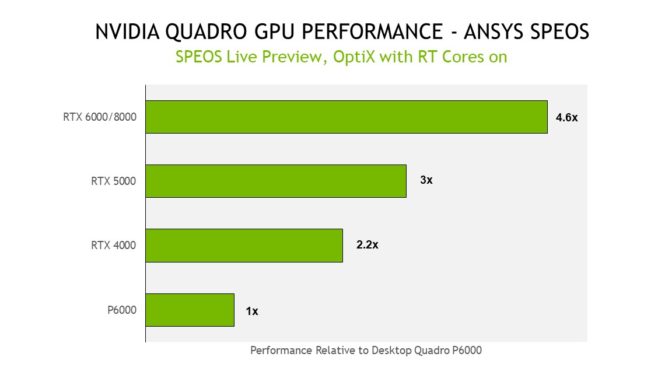Detailed simulations are a critical part of engineering design. But to get accurate results faster, engineers need GPU power.
To help professionals create high-quality simulations, two products from engineering software company Ansys — Ansys VRXPERIENCE Perceived Quality and Ansys SPEOS — now provide enhanced NVIDIA RTX support. This allows engineers and designers to take advantage of GPU acceleration for their optical simulations — and develop products faster.
Accelerating Virtual Experiences for Product Design
NVIDIA RTX enables engineers to visualize real-time optical simulations in VR and conduct virtual testing in ways that weren’t previously possible. Ansys VRXPERIENCE Perceived Quality provides physics-based, real-time results. People can use it to review intricate details such as true-to-life lighting and material behaviors in an immersive environment. This allows teams to evaluate designs early on in the development stage.
NVIDIA Quadro RTX 8000 graphics enhance the performance of Ansys VRXPERIENCE Perceived Quality to allow engineers to achieve VR with faster frame rates and to display large, highly detailed models in a fraction of the time.
Because Ansys VRXPERIENCE Perceived Quality and Ansys SPEOS use NVIDIA OptiX technology, engineers can take advantage of CUDA cores, RT Cores and Tensor Cores to accelerate ray-traced optical simulations and freely explore what their products look like with true-to-life visuals.
Optimizing Product Designs with RTX
Optical simulations enable people to analyze how different lighting conditions affect how a product performs. Ansys SPEOS software provides physics-based light simulation to help make these predictions under various conditions.
Now enhanced with RTX, Ansys SPEOS can deliver full physical ray tracing to depict accurate reflection and glare levels during virtual product reviews.

Performance testing completed on a range of lighting projects based on typical Ansys SPEOS cases.
The latest release includes a SPEOS Live Preview feature that uses NVIDIA OptiX RT Core technology to perform ray tracing 5x faster than traditional GPU ray tracing. This allows engineers to explore and interact with their simulations — and make better informed decisions while speeding review cycles.
“Instead of waiting overnight with CPU computation, users can now get their result in a near real-time fashion,” said Lionel Bennes, product manager for VRXPERIENCE at Ansys. “Through NVIDIA Quadro RTX coupled with Ansys SPEOS’ Live Preview interactive capabilities, we have this near-live exploration of optical simulations that is closer to real time on full physics simulation than has ever been possible.”
Learn more about Ansys and its GPU-accelerated products.